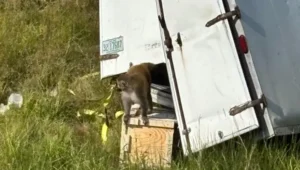Despite winter challenges, Tesla and other EV makers are improving cold-weather performance, helping drivers adapt and enjoy their vehicles year-round.
The recent polar vortex has brought frigid temperatures across much of the United States, disrupting daily life and impacting numerous industries. Among the challenges posed by the extreme cold is its effect on the performance of electric vehicles (EVs), including Tesla models.

How cold weather affects EV performance
EVs rely on lithium-ion batteries, which are highly sensitive to temperature changes. In freezing conditions, the chemical reactions within the battery slow down, reducing energy efficiency and overall driving range. Studies indicate that EVs can lose up to 20-40% of their range in sub-zero temperatures.
Tesla vehicles, like most EVs, are equipped with thermal management systems designed to mitigate these effects by keeping the battery at an optimal operating temperature. However, these systems consume additional energy, further reducing range. Moreover, cold weather can also increase charging times, as batteries take longer to reach the ideal temperature for fast charging.

Additional strains on EVs during extreme cold
- Heater usage: unlike internal combustion engine (ICE) vehicles, which utilize waste heat for cabin warming, EVs rely on their batteries to power electric heaters. This added energy demand can significantly impact driving range.
- Tire performance: cold weather reduces tire flexibility and grip, which can affect the efficiency and handling of EVs. Tesla’s regenerative braking systems may also be less effective in icy conditions.
- Battery preconditioning: Tesla and other EVs often recommend preconditioning the battery before driving or charging in cold weather, which requires planning and additional energy.

Tips for EV owners to optimize performance during winter
- Precondition your vehicle: use Tesla’s app or in-car settings to preheat the cabin and battery while the vehicle is plugged in, reducing strain on the battery during the drive.
- Keep the battery charged: maintain a higher state of charge during winter to accommodate the reduced range and extra energy demands.
- Use scheduled charging: charge the car closer to your departure time to take advantage of a warmer battery.
- Limit heater use: opt for seat warmers instead of blasting the cabin heater to conserve energy.
- Monitor tire pressure: check and adjust tire pressure regularly, as cold air reduces pressure, affecting efficiency and safety.
- Plan charging stops: if embarking on a long trip, use Tesla’s navigation system to locate Superchargers along your route and factor in extra time for charging.
Despite the challenges posed by winter weather, Tesla and other EV manufacturers continue to improve cold-weather performance through software updates and engineering advancements. By following these tips and understanding how extreme temperatures impact EVs, drivers can better adapt and continue to enjoy the benefits of their vehicles year-round.

UPS Crash in Kentucky: The Critical Role of Drivers and Dashcams
The UPS crash in Kentucky highlighted how truck drivers often become first witnesses to major incidents, with dashcam footage providing essential evidence for investigators, fleet managers, and insurers

The 2025 Capitol Christmas Tree tour kicks off by the hand of Knight-Swift
The nearly 3,000-mile journey of the U.S. Capitol Christmas Tree began with a special celebration at the Nevada Day Parade in Carson City. The month

A new study links traffic accidents to violations of the ELP regulation
A new study analyzed the relationship between traffic accidents and drivers who violate the English Language Proficiency (ELP) regulation. A new study analyzed the relationship

Clean Truck Deal: Judge Halts California Emissions Agreement with Truck Manufacturers
Clean truck deal and California emissions return to the center of the national debate after a federal court blocks enforcement of the Clean Truck Partnership, pausing requirements tied to zero-emission truck adoption while litigation continues.

Truck Transport of Live Animals for Research: Lessons from the Mississippi Monkey Incident
The transport of live animals for research is under renewed scrutiny after a truck carrying rhesus monkeys overturned in Mississippi, allowing several to escape. This article explains what went wrong, how these transports are supposed to operate, and what lessons the trucking industry can take away.

Halloween activities for truck drivers: take the fun on the road
To celebrate this holiday safely while keeping the fun alive, we’ve put together a list of activities truck drivers can do to embrace the spirit
